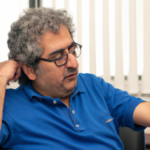Dear reader, If you are here, you may be presenting some symptoms or have recently been diagnosed with prostate cancer. Or maybe it is someone from your immediate environment.
Don’t worry, the cure rate for prostate cancer is among the highest, especially when diagnosed in the early stages. For this we will talk about 6 things you should know and that will help you realize if it is possible that you are suffering from prostate cancer.
Does Graviola cure Prostate Cancer?
Currently there are numerous studies proving that Graviola is an extremely effective supplement used along with the usual treatment to fight prostate cancer. Its numerous properties, among which are the ability to feed on cancer cells, significantly help to reduce and even eliminate tumors. We recommend taking “Graviola Prozono“
Find the studies below
What should I know about prostate cancer?
Prevention
There is no magic formula to prevent prostate cancer. However, eating a healthy and balanced diet, physical exercise and maintaining the adequate weight, decreases the chances of suffering this (and other) types of cancer.
Causes
Causes of prostate cancer are not known exactly.However, overweight and lack of physical exercise are factors that will put you at risk of suffering from it.
Genetic factors are also a possible cause. If there are several cases of prostate cancer in your family, you should mention it to your doctor so they can perform the relevant tests and check if you are genetically predisposed to this cancer.
Symptoms
Please keep in mind that there are symptoms that may be due to many other pathologies. However, it is important to consult with a specialist.
- Frequent urination (going very often to pee). Pain. It is also likely that you have to make an effort to empty your bladder or you have a weak or intermittent urine stream.
- Blood in the urine and/or in the semen
- Erectile dysfunction
- Discomfort or pain when sitting
- Weight loss and fatigue
- Swelling in the legs
- Pain in the back, hips or other bones.
Types
Prostate cancer is differentiated into several types depending on the stage in which it is and the organs affected. Although there is an extensive typology, we will summarize it in several insights:
Initial state:
- The cancer is located in the prostate and has not spread to any organ. It is possible that the tumor has only been located by a method, such as rectally, but it does not appear in other tests. It is categorized with the letter T.
Cancer spread to the lymph nodes.
- Lymph nodes are glands located next to the prostate. When they are infected as well it is categorized with the letter N.
Cancer spread in the state of metastasis.
- It is categorized with the letter M when the cancer has spread to other parts of the body.
Diagnostics
Non-invasive methods are all of those that allow a “”photo”” of the prostate area, but that many times won’t be conclusive. I.e. ultrasounds, tomography or magnetic resonance imaging.
Invasive methods are more definitive in terms of diagnosis and the physicians use them when indications exist that you may be suffering from prostate cancer. Among these you will find:
PSA Test:
- In blood. This is the most common test for detecting prostate cancer. It consists of assessing, by means of an analysis, certain values that will tell the specialist of the possibility that a tumor exists.
Biopsies
- They consist of extracting a sample from the affected area to analyze it for cancer cells.
Bone Scan (Skeletal Scintigraphy)
- By injecting some chemical substances and ustuding its reaction, the study aims to analyze if there is a possible extension of the cancer to the bones
Treatments
There are several treatments to fight prostate cancer. Let’s point out the most common ones:
Waiting in observation and active surveillance:
- This treatment consists exclusively of monitoring very closely the evolution of cancer, with tests and examinations every six month at least and it is used with patients in whom it is expected that the evolution of the cancer is very low.
Surgical intervention
- Depending on the extent of the cancer, the prostate and lymph nodes (if they are infected) are removed.
Cryotherapy
- It is a treatment used in the early stages of cancer and involves cooling the cancer cells to prevent their spreading and to eliminate them.
Treatment with vaccines
- This treatment tries to extend the life of men whose diagnosis is severe. It has not been proven to cure cancer, but it does extend the life of prostate cancer patients.
Treatment directed to the bones
- This type of cancer, when spread, almost always gets to the bones. That is why there are a few meds designed to stop and alleviate this progress and get a better diagnosis for the patient.
Radiotherapy
- This type of therapy consists of subjecting the affected area to radiation of all types of X-rays to eliminate possible cancer cells that the surgeon hasn’t been able to see. It is also used not only as a cure but to alleviate the symptoms.
- Its main effect is the redness of the skin.
Chemotherapy
- It is administered either orally, or through intramuscular or intravenous injections. As with radiotherapy, its main goal is to kill cancer cells.
- Its main side effects are hair loss, nausea and loss of appetite







